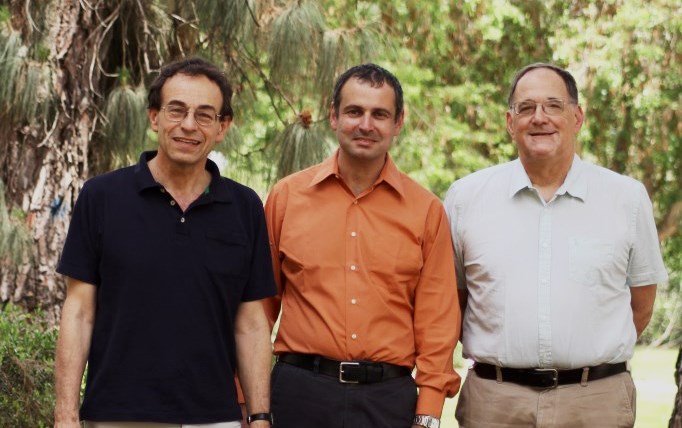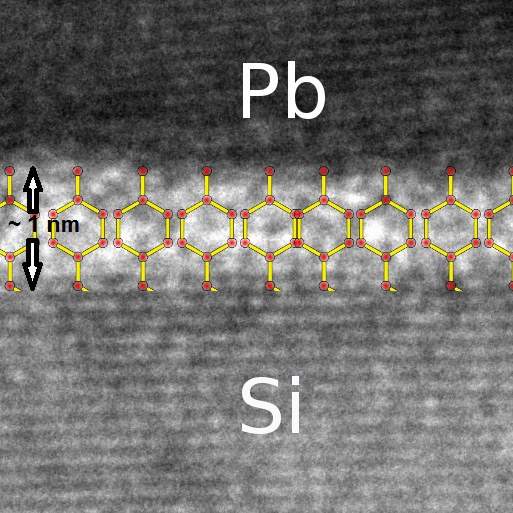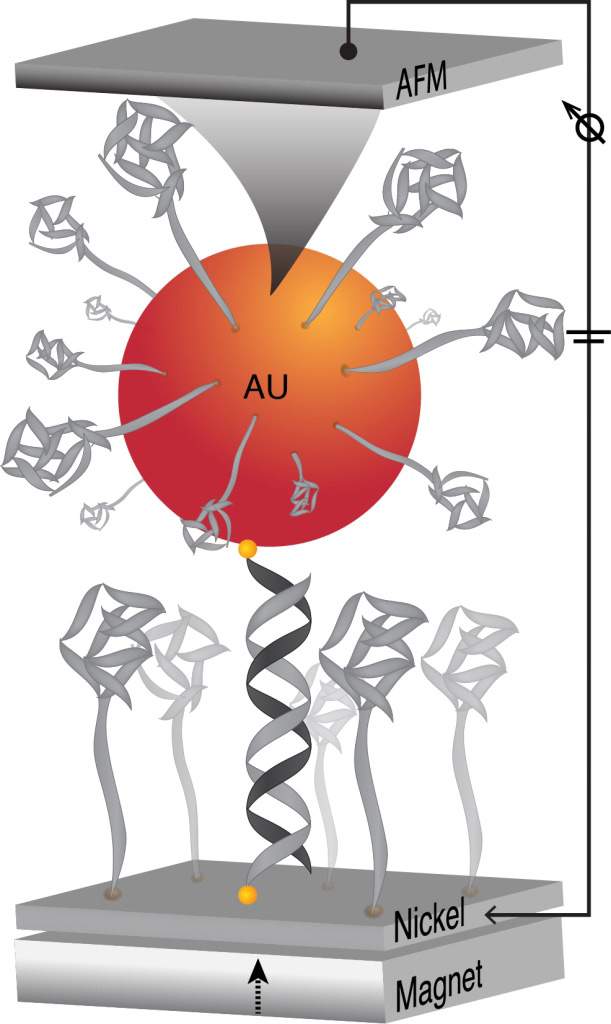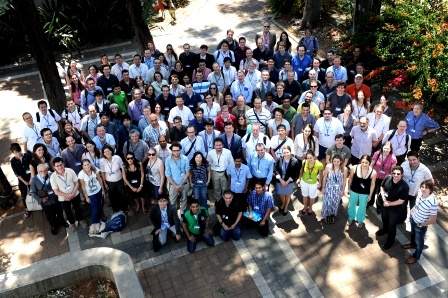The use of silicon – the ubiquitous semiconductor material found in most electronic devices today – became possible only once industry figured out a way to “tame” its “messiness” through the process of oxidation: A thin oxide layer is grown on its surface. This offers a controlled decrease in defects at the interface between the silicon and the oxide, as well as adding a protective layer to the silicon. But oxidation is a difficult process; placing a thin layer – one to three atoms thick – of organic molecules at the interface leads to better control and opens up the potential for obtaining new properties.
Why is this important for solar cells? The best conventional solar cells are close to their theoretical limit (about 30%), but most are much less efficient; much of the avoidable energy loss is the result of less-than-optimal control at the interface. “Though solar cells made with organic materials are not yet in commercial use, the example of organic LEDs, which are already being manufactured and used, gives us hope that it’s only a matter of time before organic photovoltaics will mature into a viable technology,” says Cahen. “Along the way, we are learning the fascinating science of these interfaces.”
In another area of organic electronics known simply as molecular electronics, single molecules or one-molecule-thick layers of an organic compound are the active elements of electronic devices. This branch is being explored by
Prof. Ron Naaman. More specifically, his research focuses on spin electronics or “spintronics.” Spintronic devices take advantage of an electron’s spin – a quantum property – and Naaman is trying to figure out, among other things, how spin can be used for memory devices and computing. Such computers would harness the power of atoms and molecules to perform calculations significantly faster than any silicon-based computer. Although they are mostly a “sci-fi” notion at present, Naaman is making some interesting strides toward turning this notion into reality.
An electron’s spin has two possible states, either “up” or “down,” and changing the ratio of spins in a material can change its properties. Controlling electron spin within a device is usually achieved with magnetic layers; but the use of these is complex, and they are sensitive to heat and cold.
Naaman discovered that spin direction can be controlled with organic, biological molecules, especially helical, double-stranded DNA. He based this discovery on a well-known property of organic molecules: They exist in either “left-” or “right-handed” forms that cannot be superimposed on one another. When Naaman exposed DNA to mixed groups containing electrons with both directions of spin, the DNA “preferred” electrons with one particular spin over the other.
Naaman: “DNA has turned out to be a superb ‘spin filter,’ and this concept has opened up new avenues in using organic materials for spintronics.”
Joining forces
“The overwhelming response we received from students and postdocs around the world is testament: This field is alive and well,” says Prof. Leeor Kronik, co-organizer of the 7th International Conference on Electronic Structure and Processes at Molecular-Based Interfaces (ESPMI VII), recently hosted at the Weizmann Institute of Science. The conference brought together some of the best minds in the field, providing a platform for sharing the latest research results as well as the opportunity to consolidate old collaborations and forge new ones. To make the conference more useful to those at the beginning of their career, mainly students, a workshop with tutorials was organized by Weizmann Institute students in the days before the actual meeting.
The conference was attended by more than 150 scientists; some 42 acknowledged experts in the field – from the USA, through Europe, to Japan – were invited to speak. Kronik: “The decision to hold the conference in Israel this year is recognition that important and interesting research on organic-inorganic interfaces is being conducted here.”
Prof. David Cahen's research is suppored by the Mary and Tom Beck Canadian Center for Alternative Energy Research, which he heads; the Leona M. and Harry B. Helmsley Charitable Trust; the Nancy and Stephen Grand Center for Sensors and Security; the Ben B. and Joyce E. Eisenberg Foundation Endowment Fund; the Monroe and Marjorie Burk Fund for Alternative Energy Studies; the Carolito Stiftung; the Wolfson Family Charitable Trust; the Charles and David Wolfson Charitable Trust; the estate of Theodore E. Rifkin; and Martin Kushner Schnur, Mexico. Prof. Cahen is the incumbent of the Rowland and Sylvia Schaefer Professorial Chair in Energy Research.
Prof. Leeor Kronik's research is supported by the Wolfson Family Charitable Trust; the Carolito Stiftung; the European Research Council; the Leona M. and Harry B. Helmsley Charitable Trust; and Antonio and Noga Villalon, Winnetka, IL.
Prof. Ron Naaman's research is supported by the Nancy and Stephen Grand Research Center for Sensors and Security, which he heads; and the estate of Theodore Rifkin. Prof. Naaman is the incumbent of the Aryeh and Mintzi Katzman Professorial Chair.
Prof. Abraham Shanzer is the incumbent of the Siegfried and Irma Ullmann Professorial Chair.



